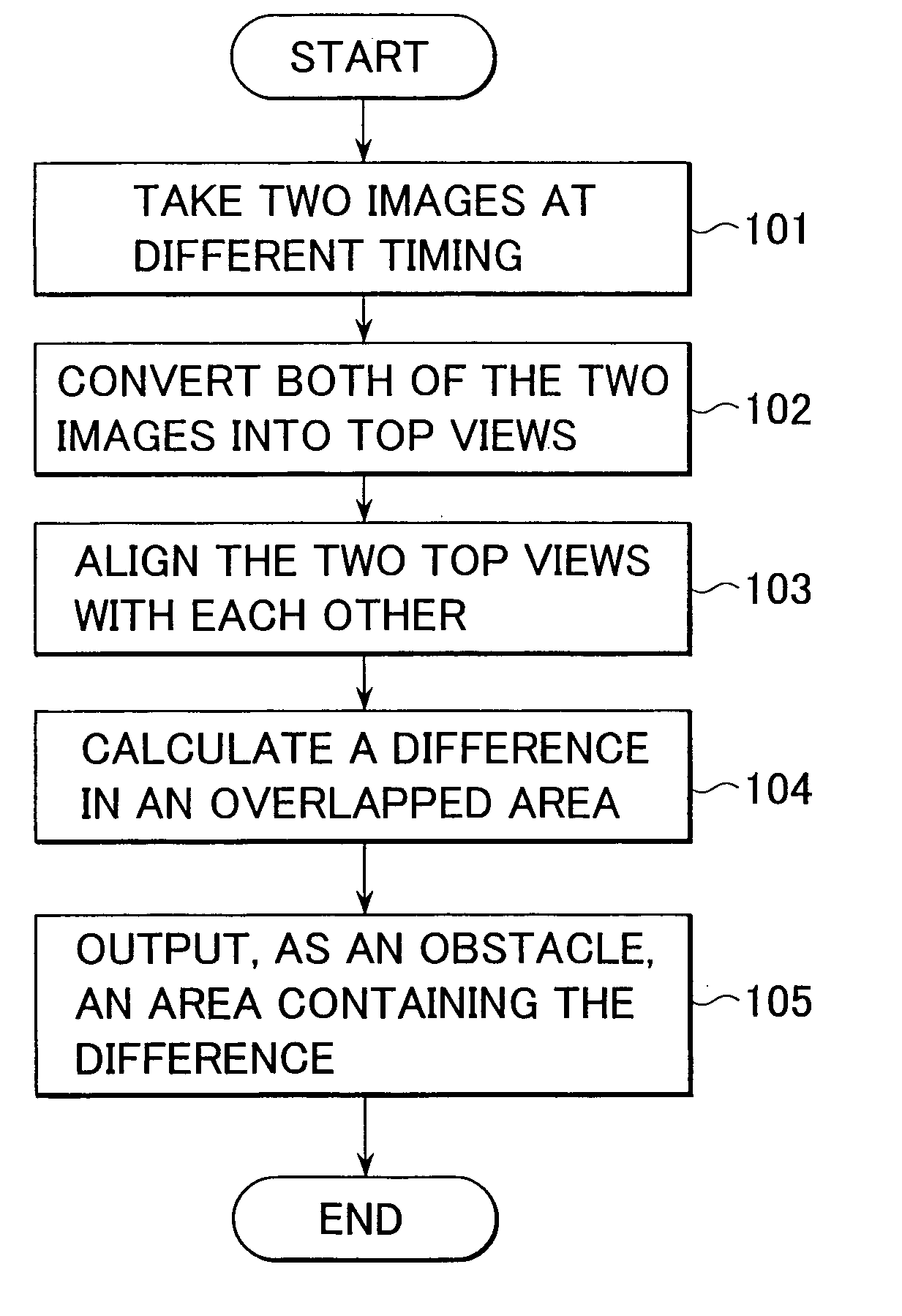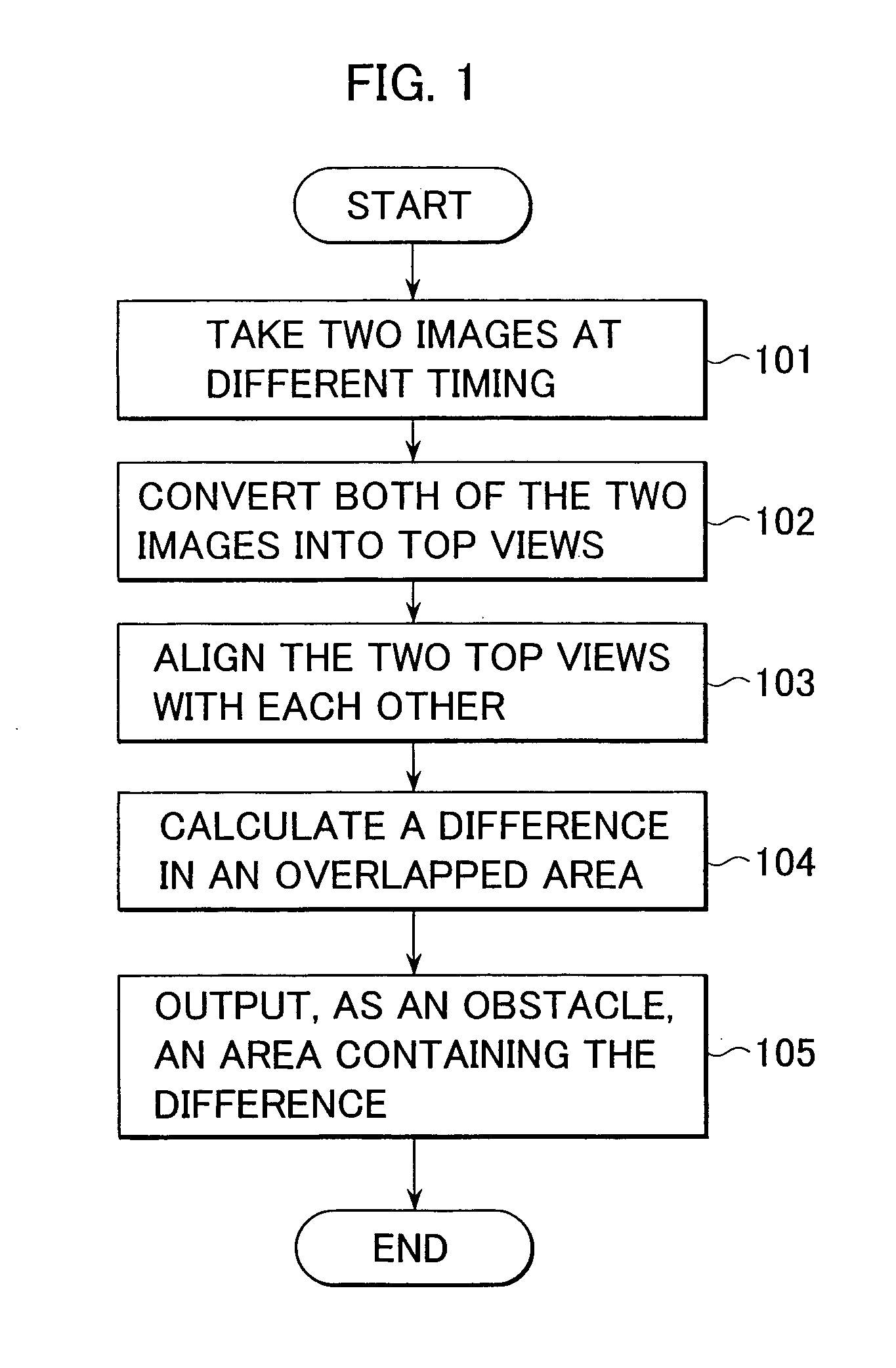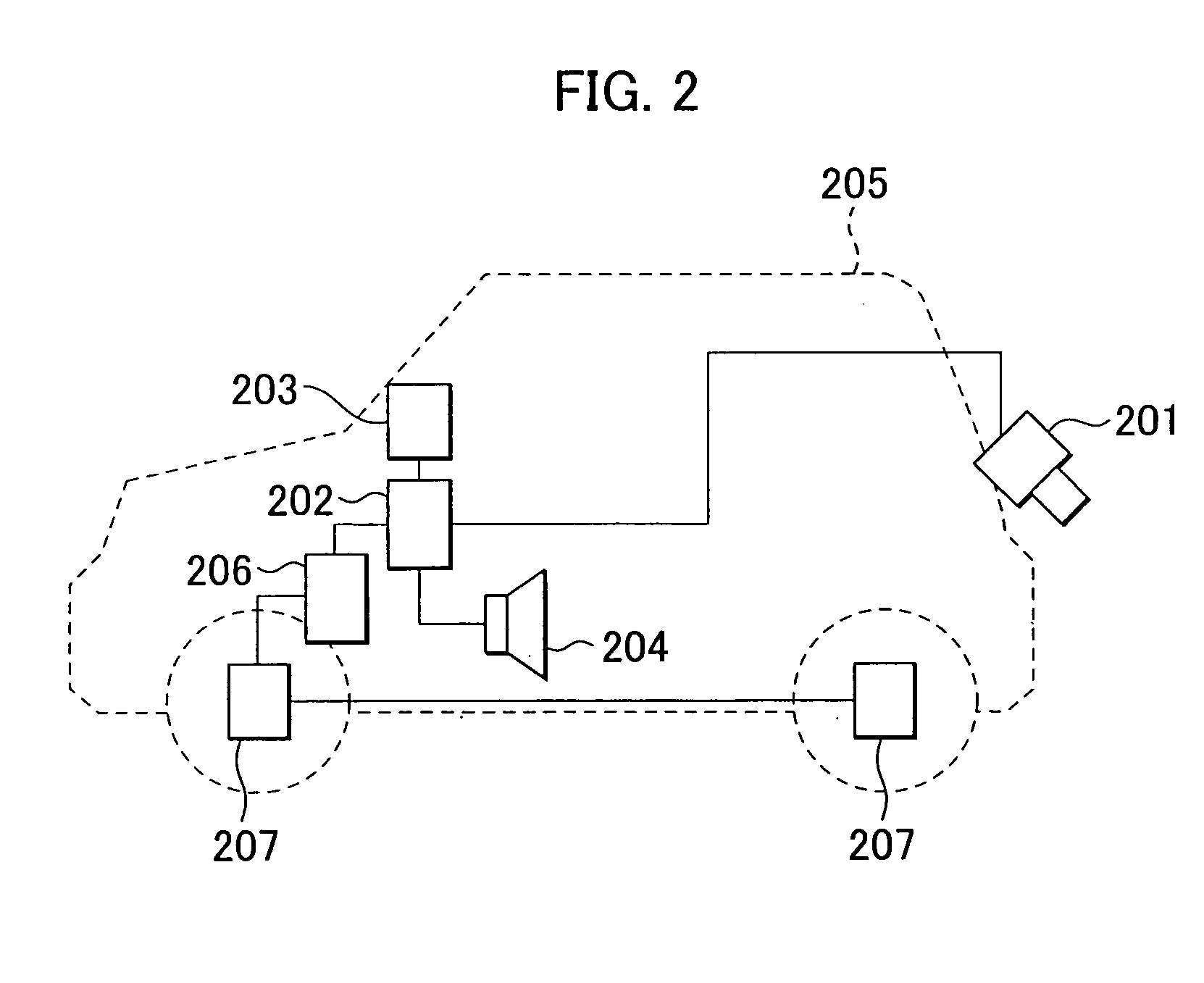Obstacle detection system
a detection system and obstacle technology, applied in the field of obstacles detection systems, can solve the problems of reducing the accuracy of the vehicle wheel speed sensor, affecting the accuracy of the vehicle speed measurement, and the likelihood of errors in the measurement value of the vehicle speed and rudder angle, so as to eliminate the false detection of obstacles and achieve the effect of high degree of accuracy
- Summary
- Abstract
- Description
- Claims
- Application Information
AI Technical Summary
Benefits of technology
Problems solved by technology
Method used
Image
Examples
first embodiment
[0020]FIG. 2 is a diagram illustrating a configuration of a vehicle that is equipped with an obstacle detection system. A camera 201 is mounted to the rear of the vehicle 205. This camera 201 is located with such a depression angle that the optical axis of a lens is oriented in an obliquely downward direction. A video image is taken by this camera 201 as an oblique overhead view. Image data which is imaged by the camera 201 is inputted into a processing unit 202 through a communication line 209. The processing unit 202 identifies an obstacle by means of the undermentioned image processing. The processing unit 202 is connected to an image display unit 203 through a signal line. The processing unit 202 displays various kinds of information about the obstacle, the information including an image imaged by the camera 201, and the positional relationship between the detected obstacle and the host vehicle. In addition, the processing unit 202 is also connected to an audio output unit 204. ...
second embodiment
[0049]Up to this point, the embodiment which uses white lines was described as a method for associating two images with each other. In the case of an outdoor parking space or a multistory parking space, white lines are drawn on the road surface in many cases. Accordingly, it is possible to associate images with each other by using each of the white lines as a landmark. However, in the case of a home garage where only one car is parked, in many cases white lines are not drawn on the road surface. In such a case, it is necessary to find out a landmark other than the white line. An embodiment in which no white line is drawn will be described as below.
[0050]Incidentally, a configuration of the vehicle 205 and that of the processing unit 202 in this embodiment are the same as those illustrated in FIGS. 2, 3. In addition, the process flow in this embodiment is also the same as that illustrated in FIG. 1 except processing of associating each position of one image with each corresponding po...
PUM
 Login to View More
Login to View More Abstract
Description
Claims
Application Information
 Login to View More
Login to View More - R&D
- Intellectual Property
- Life Sciences
- Materials
- Tech Scout
- Unparalleled Data Quality
- Higher Quality Content
- 60% Fewer Hallucinations
Browse by: Latest US Patents, China's latest patents, Technical Efficacy Thesaurus, Application Domain, Technology Topic, Popular Technical Reports.
© 2025 PatSnap. All rights reserved.Legal|Privacy policy|Modern Slavery Act Transparency Statement|Sitemap|About US| Contact US: help@patsnap.com



